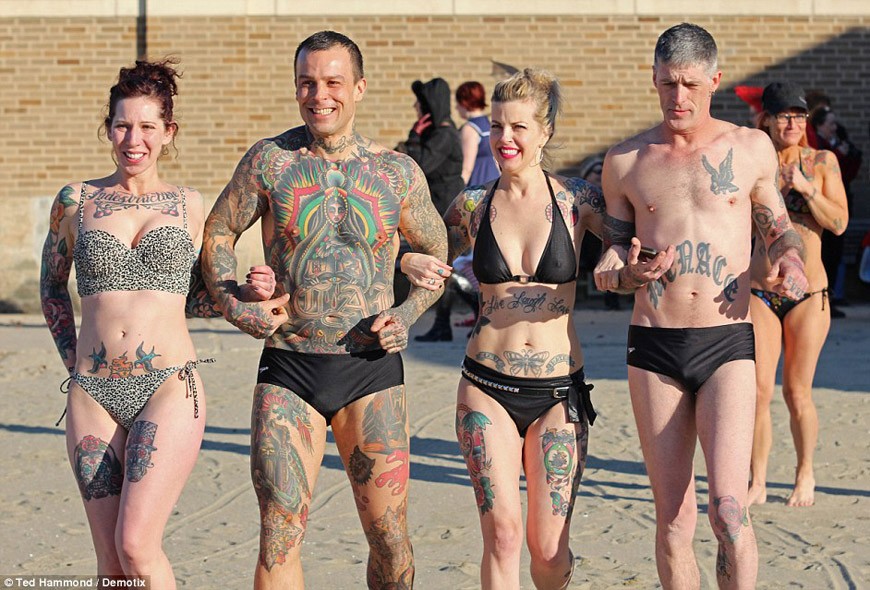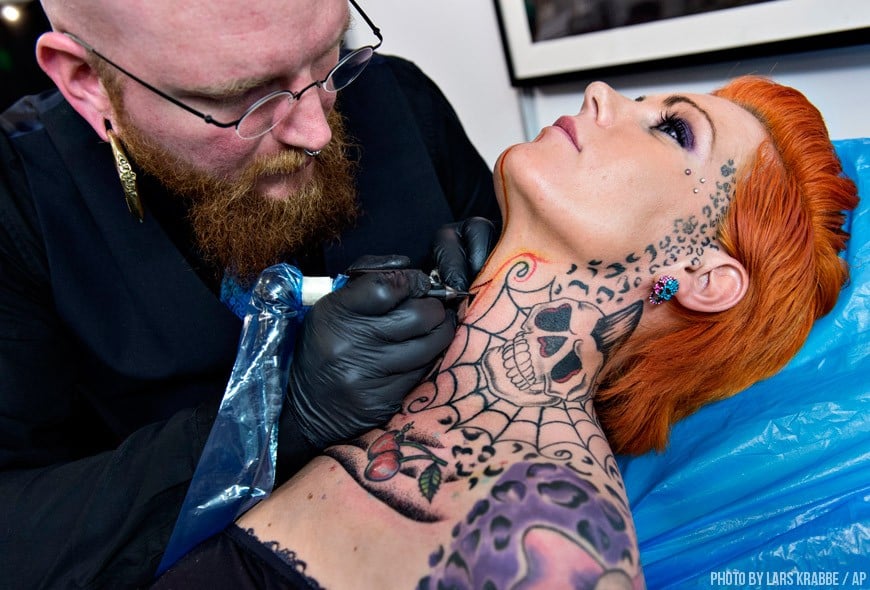One of the major setbacks in getting inked is the fear of being stigmatized in the workplace — or the fear of not even being able to get a job at all. Tattoos used to only be common among sailors, inmates, or rebels, but over the last few decades, they’ve evolved into a form of personal expression.
Though there is discretion in the work industry concerning whether visible tattoos are acceptable in the professional world, the evolution of tattoos has brought this controversial form of art to a new social perspective.
Tattoos in the Workplace
A recent 2013 Pew Research study concluded that there is about $1.65 billion spent on tattoos annually. Around 14 percent of Americans of all ages have tattoos, and the percentage is higher – 36 percent – for those ages 18-25. This statistic rises to one in four Americans having a tattoo in the age range of 26-40.
A fourth of the population sporting various ink designs is a significant portion. If all workplaces had a strict “No Tattoo” policy, there would be millions of people out of work. Employers are coming to terms with the fact that tattoos are a growing phenomenon and that the most qualified candidates for a position may very well be inked.
Still, tattoo policies vary from one office to another. Many employers think that just like purple hair or revealing attire, tattoos can serve as a distraction in the workplace. More old-fashioned employers simply can’t overlook the rebellious stigma that comes along with tattoos.
Other companies, such as the Bank of America, have no restrictions when it comes to tattoos. These companies claim to value differences and diversity among employees and argue that inclusion can only make a company stronger.
The last decade specifically has seen explosive growth in the rate of people getting tatted. It’s not just for rebellious teens now, but the evolution of tattoos includes middle-class working men and women, celebrities, athletes, teachers — you name it.
Celebrities in particular drive the US media and, let’s be honest, when we see all of the eye-candy in minimal clothing showing off their tattoos in photo shoots, we start to wonder if we too may look a little more daring and sexy with some fresh ink.
Tattoos haven’t yet been universally accepted, even though the evolution of tattoos has made incredible strides over the years. The harsh reality is that even though many people see tattoos as acceptable and even beautiful, it can still hinder people from getting a job. Visible tattoos can send the wrong message to employers, so if you want to get one, the best idea is to get it done in a spot that can be hidden by clothing or accessories if needed.
Tattoos as a Form of Expression
Believe it or not, the art of tattoos is one of the oldest in the books, dating back to ancient Egypt and India. In the 18th and 19th centuries, tattoos became popular among sailors. Captain Cook, an explorer of the Pacific in the 18th century, is known for taking artists and scientists on voyages to the islands of the Pacific where they encountered indigenous populations for whom it was ritualistic to decorate the body using a bone needle to push natural dye into the skin. Modern tattooing is luckily a much more hygienic and skilled version of this ancient method.
Tattoos today are often seen as a means of self-expression. People are getting tattoos that can help portray themselves to others and express what they believe. Others are purely getting tattoos to decorate their skin and, the extremists, to actually turn their bodies into walking tattoo canvases.
People are also using their bodies as a permanent memorial for those who have passed away. It’s a way for those who are grieving to ensure that the memory of their lost loved one will live on. Since tattoo ink is permanent, people find peace in knowing that this symbol of their love for the deceased will always be with them. But if you are not ready for a full commitment, you can now make your own temporary tattoo online to sample different designs .
Another tattoo trend that’s spread globally is to get matching tattoos with another person to express a unique connection that is shared. Mothers and daughters, sisters, brothers, twins, best friends and even lovers are getting permanently inked together.
Zoe Schapira, a 21-year-old student studying Environmental Sciences, got a matching tattoo with her older sister. They both got relatively large versions of the Tree of Life tattooed on the center of their backs, and the tree was actually designed by their brother-in-law. The Tree of Life symbolizes the interconnectivity of all life on Earth.
“We decided to get the tattoo because it symbolizes something we both feel passionate about. Since we both got matching ones we feel like it shows how close of a bond we share too,” Zoe tells MiLLENNiAL. “She’s big tree and I’m little tree.”
The Evolution of Tattoos
It’s becoming pretty clear that more and more people are getting past the old idea that tattoos are just for rebels and are starting to see them as a cool personal choice. Our skin is like a canvas where we can tell stories with awesome designs, meaningful words, and cool pictures.
Tattoos have changed a lot over time – not only are they more accepted at work now, but they also give us a unique way to show who we are. The evolution of tattoos isn’t just about being okay at the office; it’s about having this cool and special way to express ourselves.
So, as tattoos keep changing and becoming more accepted, they’re not just rebellious anymore – they’re a creative and personal form of expression, marking a significant evolution in how we perceive and use body art.


